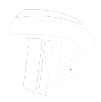1、 Different principles
1)Electroplating: the process of plating a thin layer of other metals or alloys on the surface of some metals based on the principle of electrolysis. It is a process of making a layer of metal film on the surface of metal or other material parts by electrolysis. The electroplating process is a process in which the metal ions in the plating solution are reduced to metal atoms through the electrode reaction under the action of external electric field, and the metal is deposited on the cathode.
2)Vacuum plating: various metal and nonmetal films are deposited on the surface of plastic parts by distillation or sputtering under vacuum.
2、 Different process characteristics
1)Electroplating: it can prevent metal oxidation (such as corrosion), improve wear resistance, conductivity, reflectance, corrosion resistance (copper sulfate, etc.) and enhance aesthetics.
2)Vacuum plating: in this way, a very thin surface coating can be obtained. At the same time, it has the outstanding advantages of fast speed and good adhesion, but the price is also high, and there are fewer types of metal that can be operated, which is generally used as the functional coating of higher grade products.



